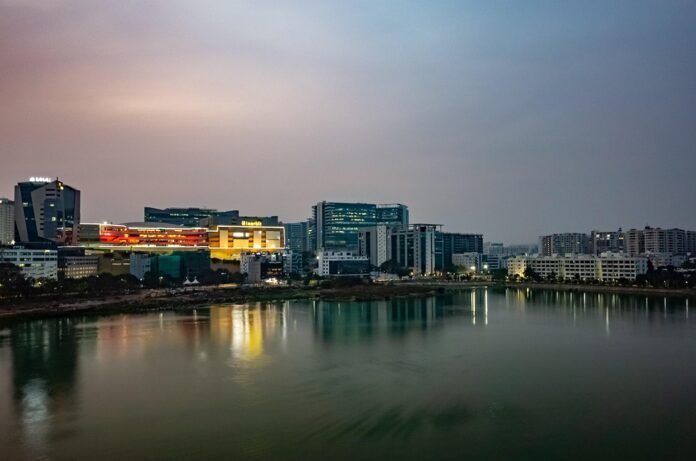Of course. Here is an article about Hyderabad as the last bastion of Deccani culture.
Beyond the Biryani: Hyderabad, The Last Bastion of Deccani Culture
Venture beyond the gleaming glass facades of Hyderabad’s Hi-Tec City, past the bustling global brands, and you will find the soul of another world. It’s a world that moves to a different rhythm, speaks with a unique lilt, and carries the weight of centuries in its graceful etiquette. This is the world of Deccani culture, and in the labyrinthine lanes of the Old City, amidst the aroma of Irani chai and slow-cooked haleem, Hyderabad stands as its last, most vibrant bastion.
Deccani culture is not merely a regional variant; it is a rich, syncretic civilization born on the Deccan plateau. For centuries, this arid heartland of India was a crossroads where North met South, and where waves of Persian, Turkish, and Arab influences mingled with the local Telugu, Marathi, and Kannada traditions. Under the patronage of the Bahmani, Qutb Shahi, and later the Asaf Jahi (Nizam) dynasties, this cultural amalgam blossomed into something entirely its own—a sophisticated tapestry of art, language, cuisine, and a distinct way of life.
While its influence once stretched across a vast territory, from Bijapur to Golconda, the currents of time have seen this culture recede. Today, it is in Hyderabad that the Deccani spirit finds its most potent expression.
The Lyrical Soul: Dakhni and Tehzeeb
At the heart of Deccani culture is its language, Dakhni. Often mistaken as a mere dialect of Urdu or Hindi, Dakhni is a language in its own right, a lyrical and expressive tongue peppered with words from Marathi, Telugu, and Kannada. It is the language of everyday humour and intimacy, where a friendly “Kya miyan?” (What’s up, friend?) carries a world of warmth, and a firm “Nakko!” (No!) is softened by its playful cadence. While standardized Urdu and English dominate formal spaces, Dakhni remains the language of the Hyderabadi heart, echoing in its poetry, street-side banter, and family conversations.
Intricately woven with the language is the famed Hyderabadi Tehzeeb (etiquette). This is the embodiment of the Ganga-Jamuni tehzeeb, a culture of syncretic harmony between Hindu and Muslim traditions. It manifests in a gentle pace of life, or itminaan, a deep-seated respect for elders, and an unparalleled hospitality, or mehmaan nawazi, where a guest is treated with the utmost reverence. This quiet elegance, a stark contrast to the rush of modern urban life, is a living relic of the Nizam-era courtly culture.
A Feast for the Senses
Nowhere is the Deccani blend more delicious than in its cuisine. The world may know Hyderabad for its biryani, but that is just the opening chapter. The true Deccani dastarkhwan (dining spread) is a testament to its Persian and local roots. There is the rich, slow-cooked Haleem, the delicate mutton-stuffed pastry Lukhmi, the tangy heat of Mirchi ka Salan, and the sweet indulgence of Qubani ka Meetha and Double ka Meetha.
This sensory journey extends to the arts. While the famous Deccani miniature paintings now hang in museums, their spirit of intricate beauty lives on. It can be found in the delicate silver inlay work of Bidriware, a craft that flourished under Deccani sultans. It resonates in the hushed halls where ghazals are sung, and it fills the air during Muharram and Milad-un-Nabi, when the sound of qawwali and marsiyas (elegies) drifts from the city’s ashoorkhanas.
A City Etched in Stone
The story of Deccani culture is etched into the very stones of Hyderabad. The architecture is a distinct blend of Persian, Mughal, and Hindu styles, creating a skyline that is both grand and graceful. The iconic Charminar is not just a monument but the city’s spiritual and geographical heart. The sprawling Qutb Shahi Tombs showcase a unique Indo-Persian aesthetic, while the opulent Chowmahalla Palace offers a window into the dazzling world of the Nizams. These structures are not just relics; they are active parts of the city’s fabric, anchoring the modern metropolis to its historic Deccani identity.
A Culture at a Crossroads
Yet, being the last bastion is a precarious position. The globalized culture of the new city, with its fast-paced lifestyle and homogenous entertainment, poses a challenge to the old ways. The younger generation, fluent in English and Hindi, is often more disconnected from the nuances of Dakhni and the unhurried grace of tehzeeb.
But the Deccani spirit is resilient. It is kept alive by families who pass down recipes and stories, by poets and satirists who ensure Dakhni thrives on YouTube and at open-mic nights, and by culinary artisans in the Old City who refuse to compromise on tradition.
To visit Hyderabad and only see its tech parks is to read just the cover of a fascinating book. To truly understand the city, one must seek out its Deccani soul. It lies in sharing a cup of Irani chai at a corner cafe, in listening to the gentle cadence of an elder’s speech, in getting lost in the lanes around Charminar, and in tasting a history that is at once regal, rustic, and profoundly unique. In a rapidly standardizing world, Hyderabad guards something precious: the lingering, fragrant perfume of a civilization.

